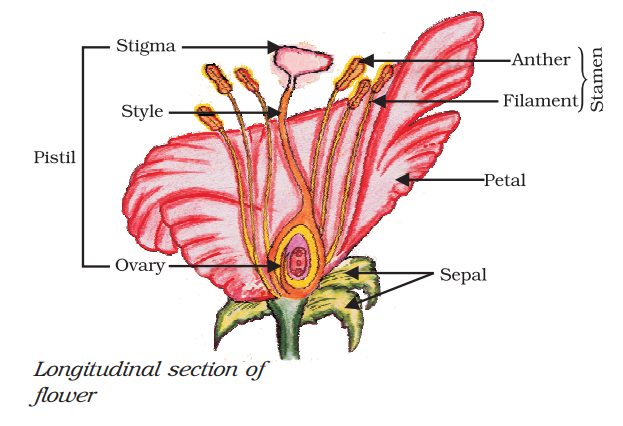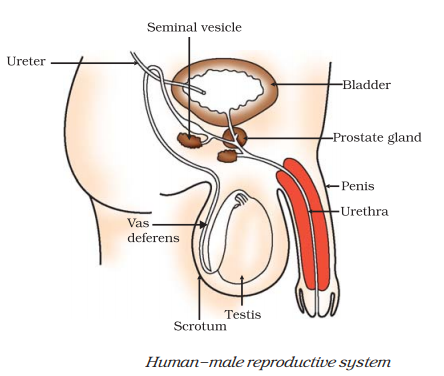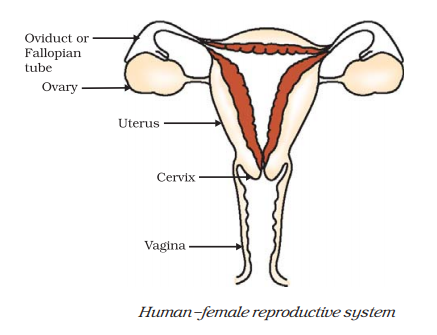Class 10 How do Organisms Reproduce? Notes
Notes Previous Years Questions Important QuestionsHow do Organisms Reproduce? – Notes
Reproduction:-
The process by which the organisms produce young ones of their own kind is called reproduction.
Types of reproduction:-
- Asexual reproduction
- Sexual reproduction
Asexual reproduction:-
The type of reproduction in which a single parent is involved is called asexual reproduction.
Types of asexual reproduction:-
Fission:-
The type of asexual reproduction by which a unicellular organism divides to form two or more individuals is called fission.
Types of fission:-
- Binary fission:- The type of reproduction in which an organism divides to form two daughter cells is called binary fission. Ex:- Amoeba, Paramecium, Leishmania etc.
Leishmania causes kala-azar.
Binary fission in amoeba :-
2. Multiple fission:- The reproduction in which an organism divides to form more than two daughter cells is called multiple fission. Ex:-Plasmodium.
Plasmodium causes malaria.
Multiple fission in plasmodium :-
Fragmentation:-
The type of reproduction in which an organism simply breaks up into smaller pieces upon maturation and each of these develop into new individuals is called fragmentation. Ex:- Spirogyra.
Regeneration:-
The type of reproduction in which if an organism is some how cut or broken up into many pieces grow into separate individuals is called regeneration. Ex:-Planaria, Hydra etc.
Budding:-
The type of reproduction in which one or more out growths develop on the body of an organism which then separate to form new individuals is called buddings. Ex:- Hydra, Yeast etc.
Vegetative propagation:-
The type of reproduction in which a vegetative part of a plant produces a new plant is called vegetative propagation.
Vegetative parts are stem, root and leaves.
- Vegetative propagation by stem:- Rose, Potato, Sugarcane, China rose etc.
- Vegetative propagation by roots:- Sweet potato, Dahlia etc
- Vegetative propagation by leaves:- Bryophyllum, Begonia etc.
The artificial methods of vegetative propagation are:-
- Cutting
Ex:- Rose, Hibiscus etc. - Grafting
Ex:- Bicoloured roses, mangoes etc. - Layering
Ex:- Jasmine
Advantages of vegetative propagation:-
- It is useful for those plants that have lost the capacity to produce seeds. Ex:- Banana, rose, jasmine etc.
- Plants raised by vegetative propagation bear fruits and flowers earlier.
- New plants produced by this method are genetically similar to the parent plant. (i.e., it helps to maintain genetic stability)
- This method helps the plants to maintain better qualities.
Tissue culture:-
The method of growing plant by removing tissue or separating cells from the growing tip of a plant is called tissue culture.
This technique is commonly used for growing ornamental plants.
Steps involved in tissue culture:-
- Group of cells are separated from the growing tip of the plant.
- The cells are then placed in an artificial medium where they divide rapidly to form a small group of cells or callus.
- The callus is transferred to another medium containing hormones for growth and differentiation.
- The plantlets are then placed in the soil so that they can grow into mature plants.
Advantages of tissue culture:-
- It is a very fast growing technique.
- Plants can be grown in disease free conditions.
- Many plants can be developed from a single plant.
Spore formation:-
The method of developing new individual under favourable conditions by forming reproductive structure called spore is known as spore formation. Ex:- Rhizopus
Sexual reproduction:-
The type of reproduction in which two parents i.e., male and female are required is called sexual reproduction.
- In sexual reproduction, two gametes (germ cells) i.e., male and female gametes are required.
- Male gamete is motile and is smaller in size.
- Female gamete contains stored food and is larger.
Sexual reproduction in flowering plants:-
- Angiosperms:- The flowering plants that produce seeds are called angiosperms.
- Male reproductive part of flower is stamen that contains filament and anther.
- The female reproductive part of flower is pistil/carpel that contains stigma, style and ovary.

Unisexual flower:- The flower which contains either stamen or carpel is called unisexual flower. Ex:- Watermelon, papaya etc.
Bisexual flower:- The flower which contains both stamen and carpel is called bisexual flower. Ex:- China rose, hibiscus etc.
Pollination:-
The transfer of pollen grain from anther to stigma is called pollination.

Types of pollination:-
- Self pollination:- The transfer of pollen grains from anther of a flower to the stigma of the same flower is called self pollination.
- Cross pollination:- The transfer of pollen grains from anther of a flower to the stigma of another flower is called cross pollination.
Agents of cross pollination:- Wind, Water, Animals, Insects
Fertilisation:-
The fusion of male gamete and female gamete to form zygote is called fertilisation.
- Zygote divides continuously to form embryo within the ovule.
- The ovule is gradually converted into seed and ovary is converted into a fruit.
Double fertilisation:- The type of fertilisation in which one male gamete in plants fertilises with female gamete to form a diploid zygote while other male gamete fuses with two polar nuclei to form triploid nucleus is called double fertilisation.
Germination:-
The seed contains embryo which develops into a seedling under appropriate conditions. This process is called germination.
Reproduction in human being:-
Puberty:-
The age or period when the reproductive organ of a child start functioning and the child attains sexual maturity is called puberty.
- In girls, the puberty is achieved at the age of 10 to 12 years and in boys at the age of 13 to 14 years.
Changes seen in boys at the time of puberty:-
- Growth of hair in the armpits and pubic region between thighs.
- Appearance of pimples on face.
- Skin frequently becomes oily.
- Growth of thinner hair on legs and arms.
- Slow growth of thick hairs on face (moustaches and beard).
- Broadening of shoulders.
- Cracking of voice box.
- Penis occasionally begins to become enlarged and erect.
Changes seen in girls at the time of puberty:-
- Growth of hair in the armpits and pubic region between thighs.
- Growth of thinner hair on legs and arms.
- Appearance of pimples on face.
- Skin frequently becomes oily.
- Broadening of hips and thighs.
- Increase in the size of breast and darkening of skin and nipples at the tips of breast.
- Girls begin to menstruate.
→ The changes at the time of puberty are caused by sex hormones.
- Male sex hormone:- Testosterone
- Female sex hormone:- Estrogen/progesterone.


- Sperm formation takes place in testis.
- Testes are located outside the abdominal cavity as sperm formation requires lower temperature.
- Glands like prostate gland and seminal vesicle add their secretions to sperm to make the sperm fluid and provide nutrition.
- Fertilisation of male gamete i.e., sperm and female gamete i.e., egg takes place in oviduct.
- The fertilised egg i.e., zygote divides to form embryo and gets implanted in the lining of uterus.
- Embryo continues to grow develops organs to become foetus.
- Embryo gets nutrition from mother’s blood with the help of special tissue called placenta.
- Placenta also helps to remove waste substances from embryo into the mother’s blood.
- The time period of nine months during which zygote is converted into a baby inside the mother’s body is called gestation period.
Menstruation:-
When the egg is not fertilised then the inner lining of uterus breaks and comes out through the vagina as blood and mucus. This is called menstruation.
Menarche:- The first occurrence of menstruation is called menarche.
Menopause:- The last menstruation which occurs at the age of 40 to 50 years is called menopause.
STDs (Sexually transmitted diseases):-
- Bacterial infections:-
Ex:- Gonorrhea, Syphilis, etc. - Viral infections:-
Ex:- HIV-AIDS, Warts etc.
Contraceptive methods to control birth:-
- Mechanical barrier:- By using condom on penis or similar covering in the vagina.
- Chemical barrier:- By changing the hormonal balance of the body so that eggs are not released by taking oral pills.
- By using IUCD (Intra Uterine Contraceptive Devices):- Such as copper-T which is placed in the uterus.
- Surgical method:-
- By blocking Fallopian tube in female.
- By blocking vas deferens in male.
→ Surgery can also be used for removal of unwanted pregnancy.


Comments
Md Salman
Awesome notes